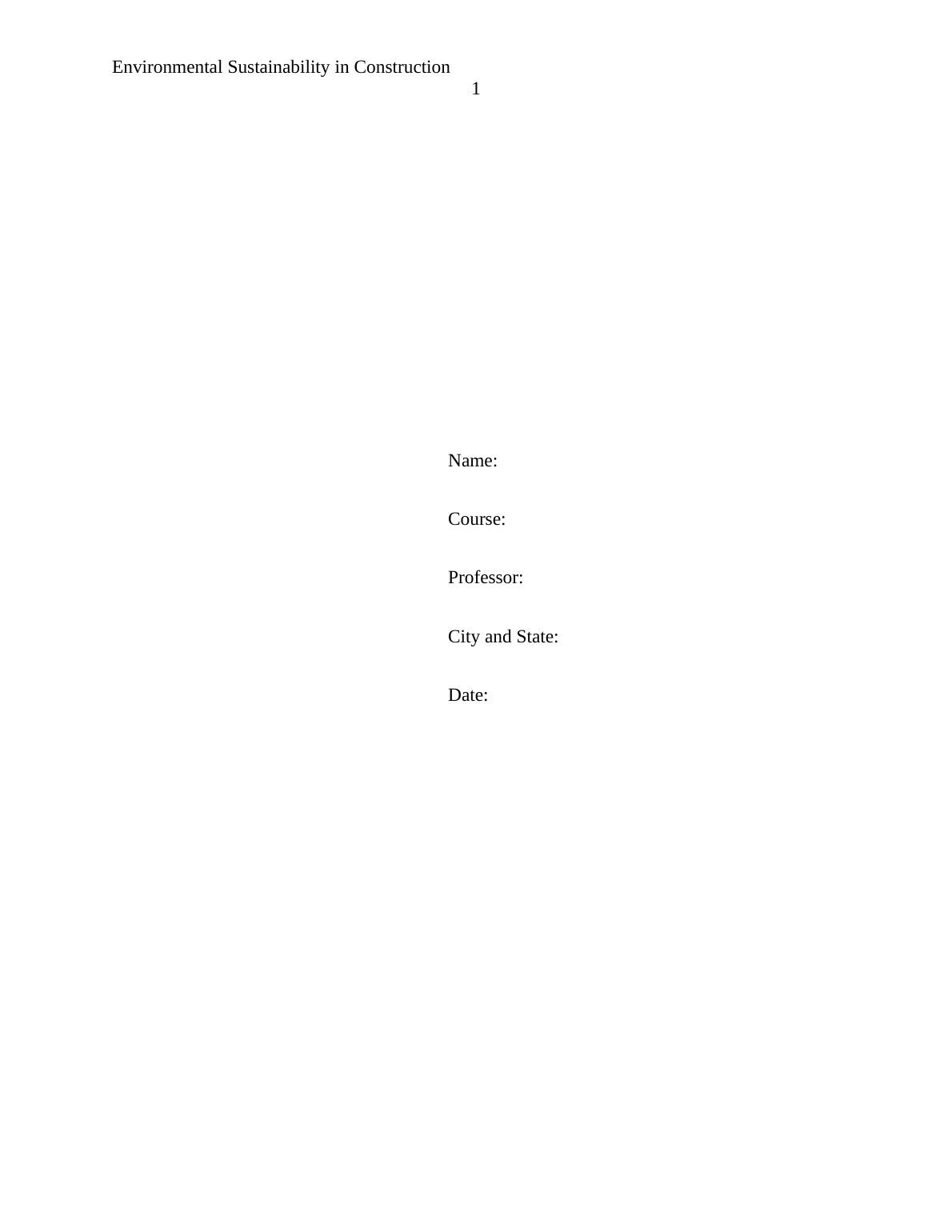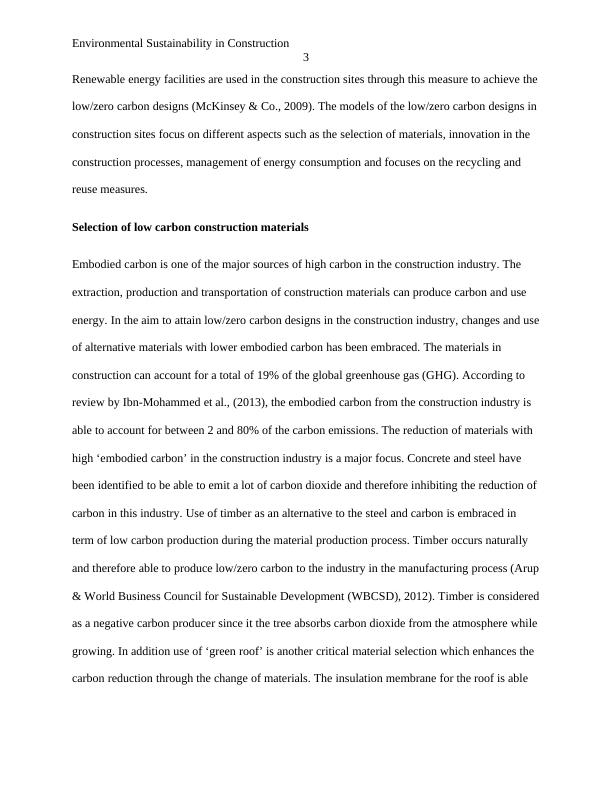Environmental Sustainability in Construction Assignment
9 Pages2333 Words239 Views
Added on 2020-05-04
Environmental Sustainability in Construction Assignment
Added on 2020-05-04
ShareRelated Documents
Environmental Sustainability in Construction1Name:Course:Professor:City and State:Date:

Environmental Sustainability in Construction2Environmental Sustainability in ConstructionAbstract Environmental sustainability in the construction industry is achieved through different processes.Low/zero carbon design processes are some of the key areas of focus to enhance the sustainability of the construction industry. The construction industry is one of the major leading producers of carbon to the environment, and the low/zero carbon design measures work to reduce the production. From the production of the construction materials to the processes and demolition of the buildings is able to amount to the production of carbon to the environment. There are several key design aspects which can be implemented to reduce the carbon production from this industry. Selection of low carbon embodied materials to replace the high embodied ones is one of the design aspects to achieve low/zero carbon design. Use of renewable energy sources, reusing and recycling of materials, improving the construction processes and management of energy production and use in these structures are some other key strategies to enhance the low/zero carbon design strategies. IntroductionReduction of carbon production from different sections has been overwhelming with different countries setting standards and levels to be attained regarding the reduction of carbon production.The construction industry is a more significant producer of carbon, and various measures have been undertaken to achieve low/zero carbon. Adoption of different design measures to attain the low/zero carbon has been developed in different countries with the aim to accomplish the set standards. One of the key factors which shape the design of the low/zero carbon designs is the climate responsive designs (Giesekam, Barrett, Taylor, & Owen, 2014). This design approach relies on the seasons and therefore designing the favourable to ensure structures are mechanicallyconditioned. Control of the cooling and heating effects on structures in different sections is used to control and attain the low/zero carbon on such locations. Another key strategy used in the evaluation of the low/zero carbon designs is the life-cycle considerations. This approach can monitor the life-cycle of the construction structure from the manufacture of materials, the construction process, and operation of the building and lastly the decommissioning of structures.

Environmental Sustainability in Construction3Renewable energy facilities are used in the construction sites through this measure to achieve thelow/zero carbon designs (McKinsey & Co., 2009). The models of the low/zero carbon designs in construction sites focus on different aspects such as the selection of materials, innovation in the construction processes, management of energy consumption and focuses on the recycling and reuse measures. Selection of low carbon construction materialsEmbodied carbon is one of the major sources of high carbon in the construction industry. The extraction, production and transportation of construction materials can produce carbon and use energy. In the aim to attain low/zero carbon designs in the construction industry, changes and useof alternative materials with lower embodied carbon has been embraced. The materials in construction can account for a total of 19% of the global greenhouse gas (GHG). According to review by Ibn-Mohammed et al., (2013), the embodied carbon from the construction industry is able to account for between 2 and 80% of the carbon emissions. The reduction of materials with high ‘embodied carbon’ in the construction industry is a major focus. Concrete and steel have been identified to be able to emit a lot of carbon dioxide and therefore inhibiting the reduction of carbon in this industry. Use of timber as an alternative to the steel and carbon is embraced in term of low carbon production during the material production process. Timber occurs naturally and therefore able to produce low/zero carbon to the industry in the manufacturing process (Arup& World Business Council for Sustainable Development (WBCSD), 2012). Timber is consideredas a negative carbon producer since it the tree absorbs carbon dioxide from the atmosphere whilegrowing. In addition use of ‘green roof’ is another critical material selection which enhances the carbon reduction through the change of materials. The insulation membrane for the roof is able

End of preview
Want to access all the pages? Upload your documents or become a member.
Related Documents
Assignment on Sustainable Developmentlg...
|13
|1947
|36
Zero/low-carbon design technology to scale the emissions of fossil fuel combustionlg...
|10
|1796
|56
Environmental Sustainability in Constructionlg...
|18
|3219
|285
Sustainable Homes Assignmentlg...
|9
|1517
|121
Development of Sustainable Home using Net Zero Energylg...
|34
|4131
|71
Environmental Management for Sustainable Developmentlg...
|11
|1545
|399
